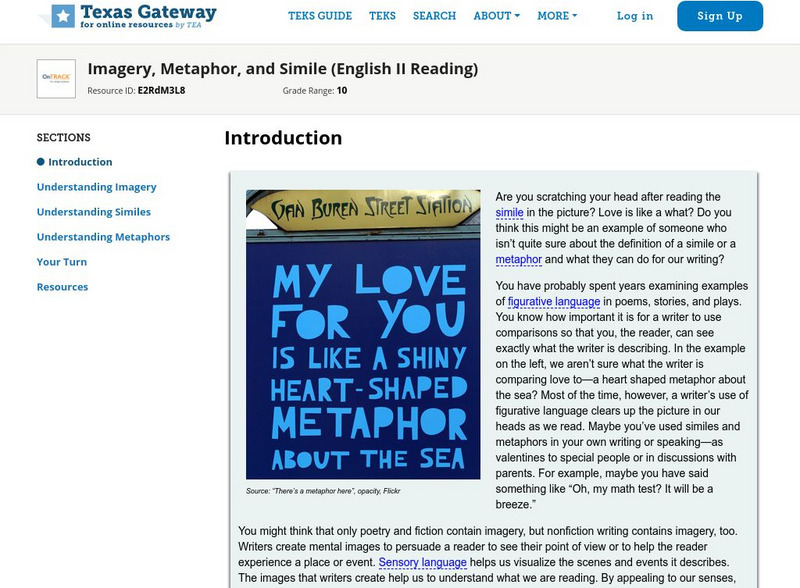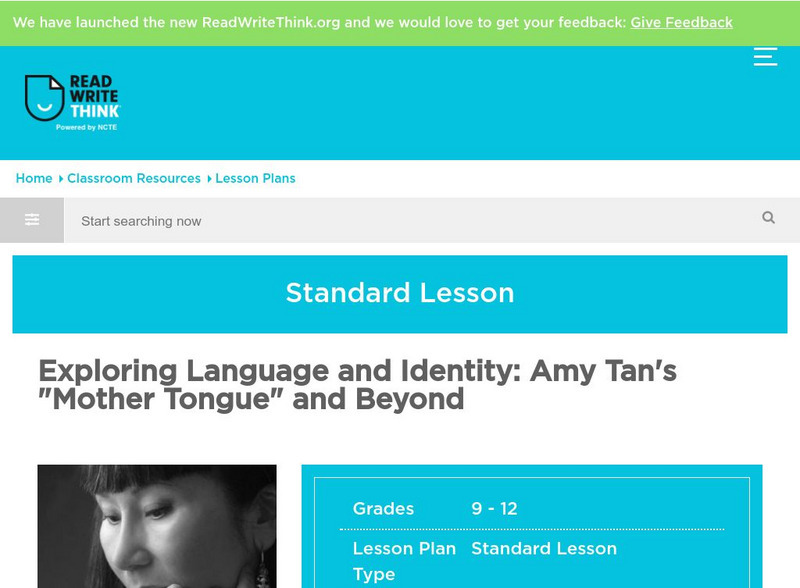Hi, what do you want to do?
Read Works
Read Works: Fact and Opinion 3rd Grade Unit
[Free Registration/Login Required] A three-lesson unit on fact and opinion through which students learn how to identify facts and opinions in different fiction genres. Students also use non-fiction texts to identify and verify facts and...
Read Works
Read Works: Main Idea 1st Grade Unit
[Free Registration/Login Required] Students learn to use titles and supporting details in both fiction and non-fiction texts in order to identify the main idea of the book in this three-lesson unit. The lessons utilize the books Animal...
Read Works
Read Works: Genre 2nd Grade Unit: Encyclopedias
[Free Registration/Login Required] A lesson in which students use the book Children's Illustrated Encyclopedia edited by Jayne Parsons to learn to locate information and find facts about a subject in an encyclopedia. Lesson includes...
National Endowment for the Humanities
Neh: Edsit Ement:portrait of a Hero
Discussing real life heroes and heroines and viewing their pictures will help students learn about reading and writing biographies. A writing rubric assessment is included in this series of activities designed to teach about heroes and...
Read Works
Read Works: Snowflake Bentley
[Free Registration/Login Required] In this ReadWorks read aloud lesson, students will describe Bentley's environment and his interactions with it. Students will evaluate the impact a person's environment can have on life. Then students...
Read Works
Read Works: Grade 2: Three Lesson Unit: Author's Purpose
[Free Registration/Login Required] A series of three lesson plans designed to teach students to identify author's purpose including to entertain, to inform, and to persuade. Lessons are based on the books The Adventures of Taxi Dog by...
Better Lesson
Better Lesson: Shadows Shadows Everywhere!
Shadows are all around us.Students will use reading comprehension strategies to distinguish between fantasy and reality.
Scholastic
Scholastic: Nonfiction Comprehension: Making Personal and Textual Connections
This is a lesson plan to help elementary students connect to nonfiction text as they read.
Scholastic
Scholastic: Teaching With Nonfiction: Teach Text Features
A brief lesson plan, this site offers an example of non-fiction text and a graphic organizer to help orient students to the features they need to use when reading for information.
TES Global
Blendspace: Nonfiction 2014 2015
A learning module with twenty-one links to images, websites, texts, slideshows, and videos about nonfiction and informational text reading skills.
Better Lesson
Better Lesson: Unit: Reading Comprehension and Structure
This unit focuses on reading comprehension and structure. It includes lessons on the main idea and supporting details, theme, sequence, fact and opinion, literary devices, character, text features, inferences, organization of nonfiction,...
Science Education Resource Center at Carleton College
Serc: Written Assignment Sessions
In this lesson, students read a scientific article, answer a quiz about it, then write a summary.
ReadWriteThink
Read Write Think: Reading Informational Texts Using the 3 2 1 Strategy
Students can count on using the 3-2-1 strategy to help them successfully comprehend and write about an informational text.
ReadWriteThink
Read Write Think: Weather: A Journey in Nonfiction
Questions about weather clear up when students use what they learned from their books to create a presentation to share with the rest of the class.
Polk Brothers Foundation Center for Urban Education at DePaul University
De Paul University: Center for Urban Education: Context to Determine Meaning of a Word [Pdf]
This learning module contains three nonfiction reading lessons that will assist student understand how to apply context clues when they encounter new vocabulary words.
ReadWriteThink
Read Write Think: Using Snowflake Bentley as a Framing Text for Multigenre Writing
Using Snowflake Bentley as a model, students create a working definition of multigenre text and then use that definition to create their own multigenre piece about winter or another theme.
ReadWriteThink
Read Write Think: Using Technology to Analyze and Illustrate Symbolism in Night
Images have power-they can trigger memories or symbolize abstract ideas. Middle schoolers put the power of images to the test as they analyze symbolism in Night and create symbolic photomontages.
Education.com
Education.com: 1st Grade Reading & Writing Resources
[Free Registration/Login Required] This collection of first grade reading and writing resources contains lesson plans and worksheets that can be used during the research process.
Other
Reading Quest: Strategies for Reading Comprehension: Summarizing
Teach students to summarize nonfiction text with these lesson plans. Includes worksheets and activities that can be downloaded and printed.
Utah Education Network
Uen: Cloud, Rain, and Fog
During these three days of lessons, 2nd graders will learn about weather from the nonfiction text by asking questions, and focusing on the text features of the book.
Georgia Department of Education
Ga Virtual Learning: Contemporary Nonfiction: The Woman Warrior
This lesson focuses on The Woman Warrior, by Maxine Hong Kingston, memoirs of her growing up as a child of Chinese immigrants. It features links to an excerpt of the text, and summaries and commentaries from Shmoop and Sparknotes. There...
Polk Brothers Foundation Center for Urban Education at DePaul University
Depaul University: Center for Urban Education: Classify Facts and Opinions [Pdf]
Students will find three lessons about facts and opinions in this learning module. The following topics are linked in the module: contrast and evaluate fact and opinion; classify facts and opinions; and locate and classify facts.
Texas Education Agency
Texas Gateway: Literary Text: Imagery, Metaphor, and Simile
Writers use sensory imagery ("smelled the salty air"), similes ("like a strong man playing tug-of-war"), and metaphors ("the waves roaring in my ears") to capture the reader's imagination. In this lesson, you will learn how to identify...
ReadWriteThink
Read Write Think: Amy Tan's
Contains plans for five lessons that use Amy Tan's essay "Mother Tongue" to teach about nonfiction and fiction as well as engage the issue of language and identity. In addition to objectives and standards, this instructional plan...







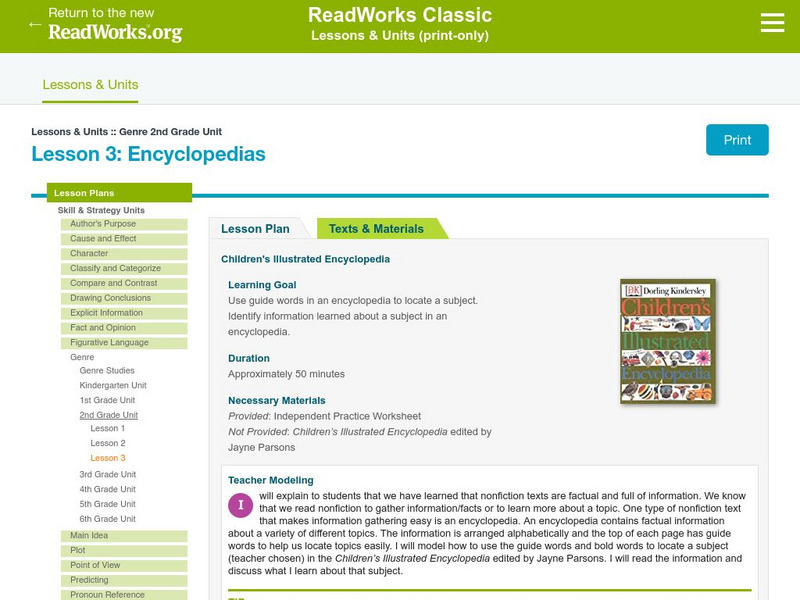
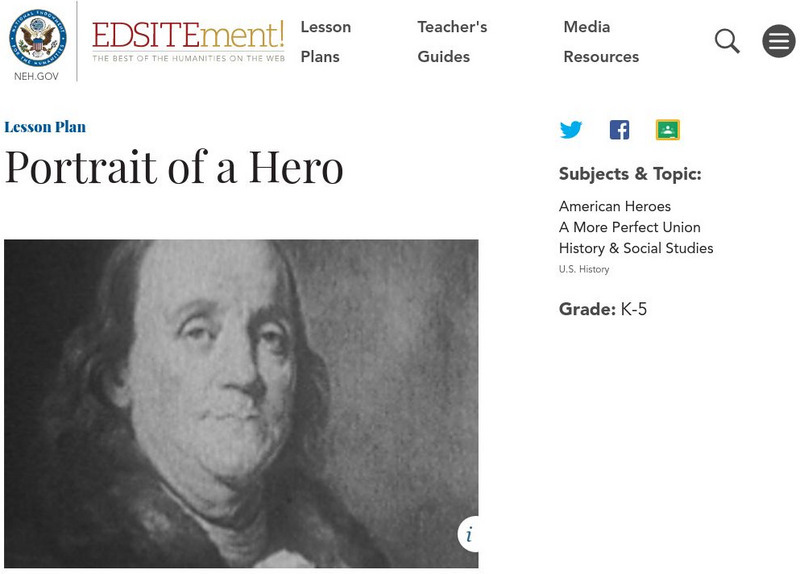

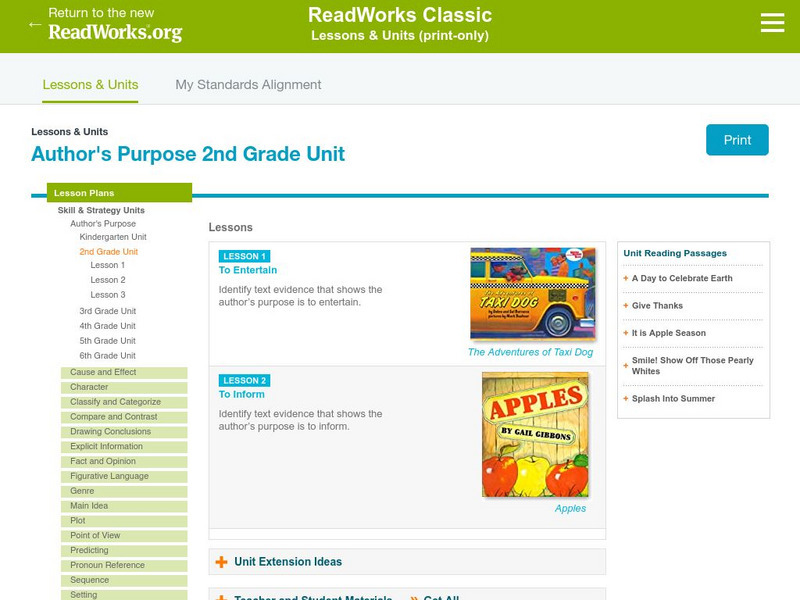




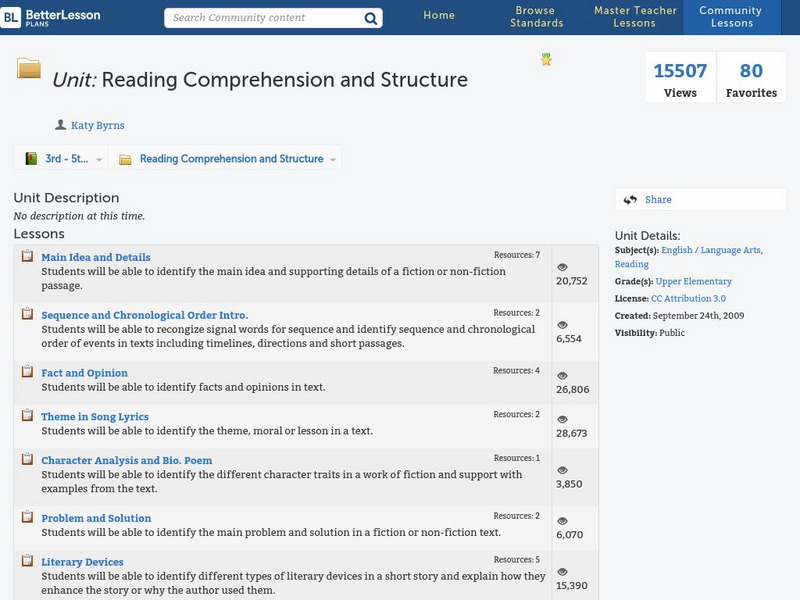


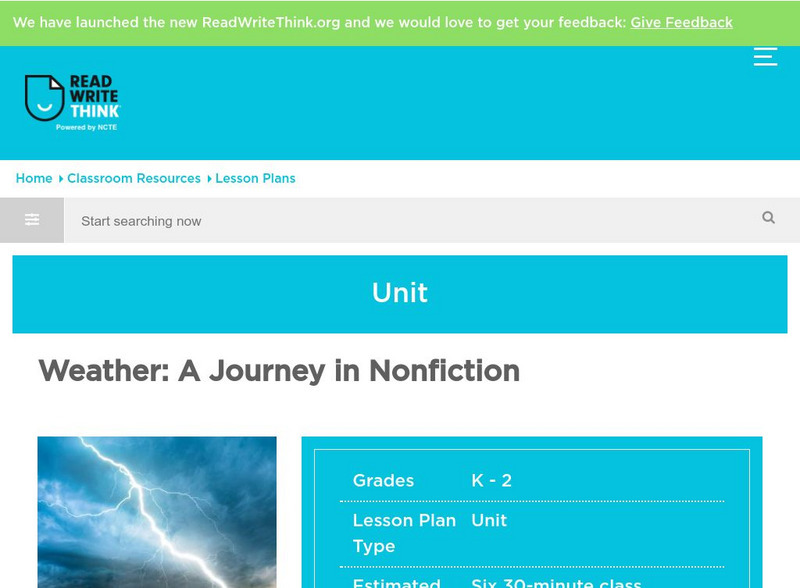
![De Paul University: Center for Urban Education: Context to Determine Meaning of a Word [Pdf] Unit Plan De Paul University: Center for Urban Education: Context to Determine Meaning of a Word [Pdf] Unit Plan](https://content.lessonplanet.com/knovation/original/78066-aa29ca332d7e865b1a287e97a791cdc5.jpg?1661787064)
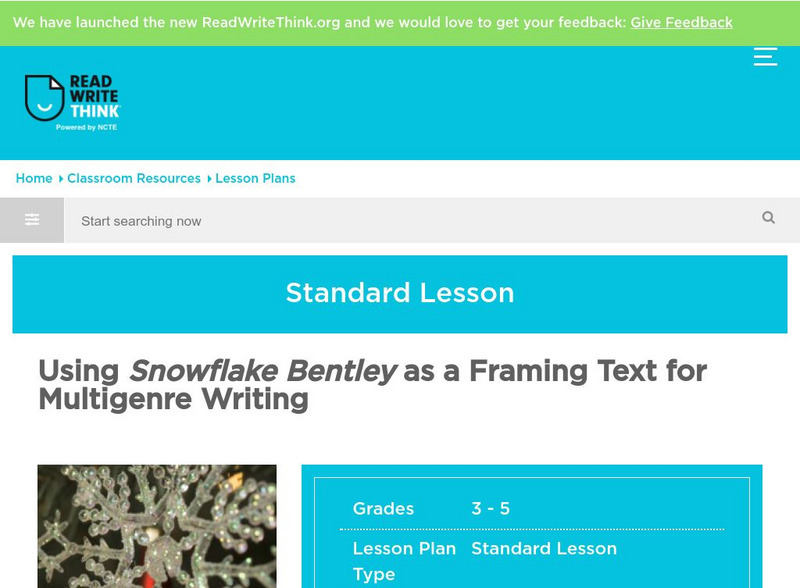

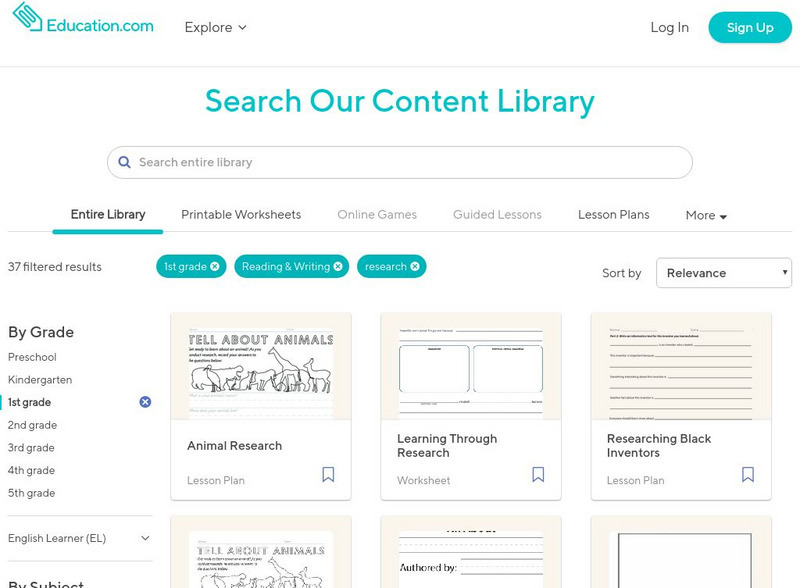


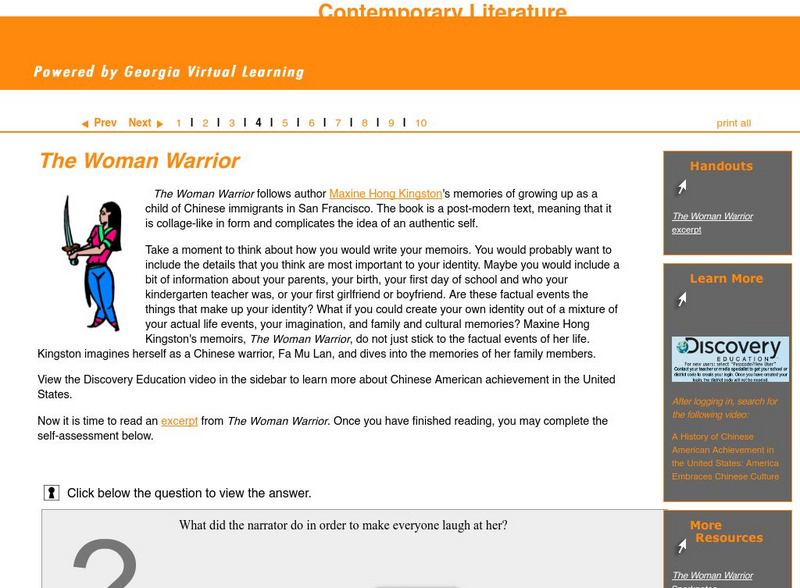
![Depaul University: Center for Urban Education: Classify Facts and Opinions [Pdf] Unit Plan Depaul University: Center for Urban Education: Classify Facts and Opinions [Pdf] Unit Plan](https://content.lessonplanet.com/knovation/original/119988-719af6c927af61affa025c27754c7fae.jpg?1661787067)
